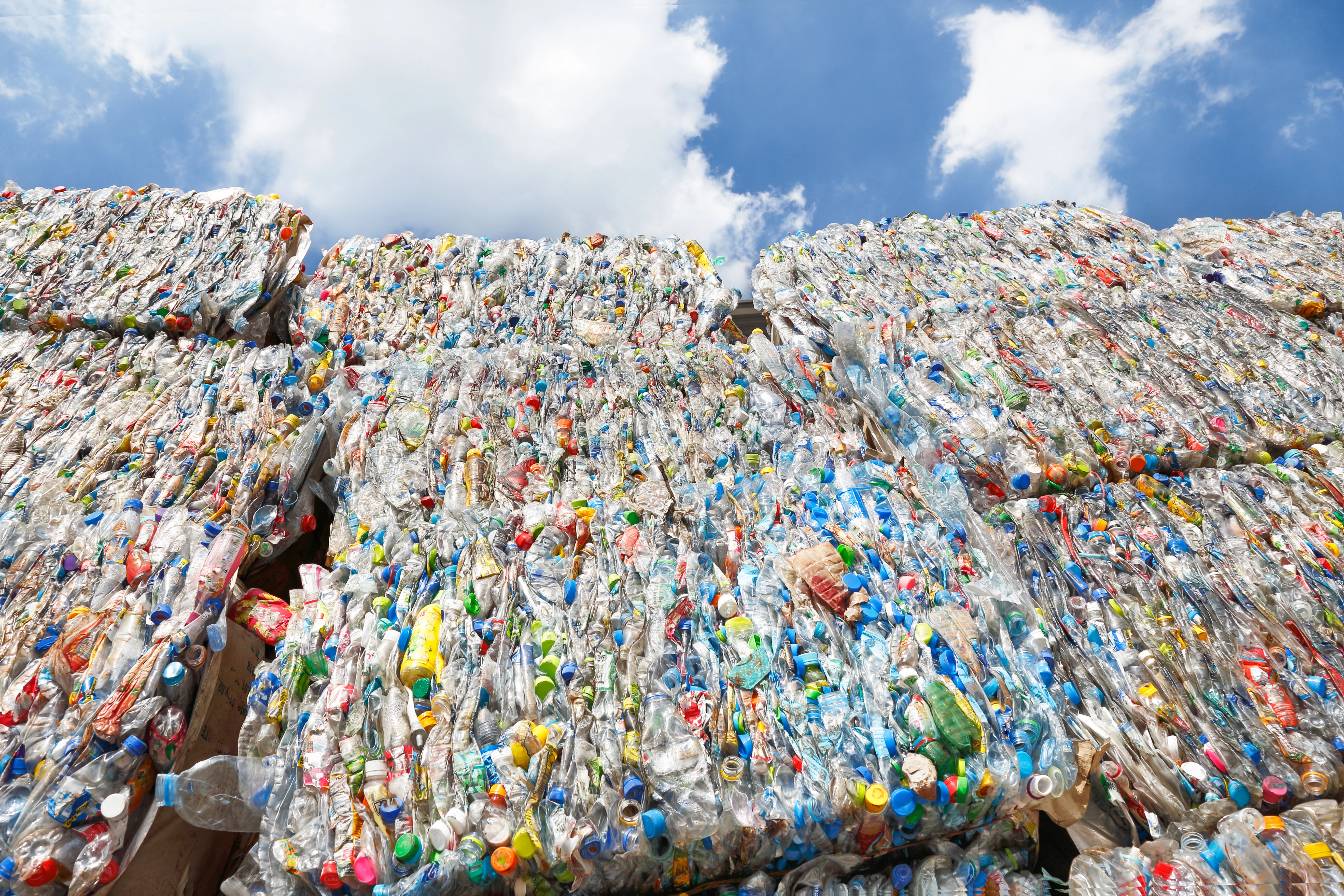Addressing Twin Crises: Climate and Plastic Pollution
-

-
Michael Sadowski
-
October 27, 2025
-
4 min read

Michael Sadowski
October 27, 2025
4 min read


The world is facing two interconnected crises – climate change and plastic pollution. According to the World Meteorological Association, 2024 was the warmest year on record, and the last 10 years have been the 10 warmest years on record. In 2024, the Earth’s surface was approximately 1.55 degrees Celsius warmer than the pre-industrial average, a figure that exceeds the level that signatories to the Paris Agreement agreed to try to limit temperature increase (1.5℃).1 The world is already experiencing a host of negative repercussions from climate change, and according to the Intergovernmental Panel on Climate Change, impacts such as drought, extreme heat, and biodiversity loss will only worsen as temperatures continue to rise.2
At the same time, the world is producing an ever-increasing amount of plastic, and with it, plastic waste. Each year, roughly 20 million tonnes of plastic waste leaks into the environment, with deleterious consequences for human health, biodiversity, and local economies.3 The life cycle of plastics, from production through consumption to end of life, contributes roughly 4% of global greenhouse gas (GHG) emissions.4 In addition to these direct GHG emissions, plastic pollution may also be disrupting the carbon cycle, for example
microplastics may be impacting the ability of soils and oceans to absorb carbon dioxide. Plastic pollution may also be affecting the Earth’s radiation budget, changing how the planet reflects, absorbs, traps, and moves energy in the atmosphere and on the Earth’s surface.5
Given the imperatives of reducing GHG emissions and plastic pollution, and the growing contribution that plastics are making towards a warmer planet, it is imperative that we take action to reduce plastic waste, including reducing production and recycling the plastic that is produced.
Introducing PLACES – Latin America and the Caribbean
In 2021, The Circulate Initiative developed the Plastic Lifecycle Assessment Calculator for the Environment and Society (PLACES) to enable buyers of recycled plastic (e.g., brands), recyclers, policy makers, and other stakeholders to better understand the environmental impacts of managing plastic waste at end of life, for example open burning and recycling. The initial version of PLACES covered six countries in South and Southeast Asia, and we have now added four countries in Latin America and the Caribbean: Brazil, Colombia, the Dominican Republic, and Mexico. The full results and methodology can be found here.
From our analysis, we see that increasing recycling rates would have substantial climate benefits. To illustrate, increasing recycling rates to 30% across Brazil, Colombia, the Dominican Republic, and Mexico could reduce GHG emissions by 5.5 million tonnes – the equivalent of taking 1.2 million cars off the road every year.6 Reaching 50% could reduce emissions by 12.5 million tonnes CO2e.
Open burning of plastic waste is a particular harmful disposal method. Open burning of plastic waste is 15 times more GHG intensive than sanitary landfills and open dumps, and generates more GHG emissions than are saved through recycling. Open burning of plastic also has a variety of negative human health impacts including coughing, skin irritation, and respiratory diseases. Burning plastic also destroys the economic value inherent in plastic materials, for example it cannot be sold by cities to recyclers.
In Brazil, less than 5% of plastic waste is openly burned, yet this accounts for 42% of all GHG emissions from managing plastic waste. In Mexico, the 11.6% of plastic waste that is openly burned generates a staggering 66% of emissions. Given these countries’ commitments under the Paris Agreement to reduce GHG emissions, they would do well to eliminate open burning of plastic waste, and shift to recycling.
A tool to better manage plastic waste
We developed PLACES to help stakeholders better understand the environmental impacts of managing plastic waste at end of life, and to make decisions that reduce climate and other impacts, for example shifting from open burning to recycling. As we consider adding new countries to the platform, we welcome feedback on the value of the current tool and how we might improve it over time.
References:
- World Resources Institute. (2025). 1.5 Degrees C: Understanding World’s Critical Warming Threshold [online]. Available from: https://www.wri.org/insights/1-5-degrees-c-target-explained
- Ibid.
- UN Environment Programme. (2025). Plastic Pollution [online]. Available from: https://www.unep.org/plastic-pollution
- The Plastics and Climate Project. (2025). Plastics: Exposing Their Climate Impacts [online]. Available from: https://www.plasticsandclimate.com/publications
- Ibid.
- United States Environmental Protection Agency. (2024). Greenhouse Gas Equivalencies Calculator [online]. Available from: https://www.epa.gov/energy/greenhouse-gas-equivalencies-calculator#results. Note: As the US EPA GHG equivalencies calculator was developed based on US-specific data, this number provides an approximate frame of reference for the reduced GHG emissions.